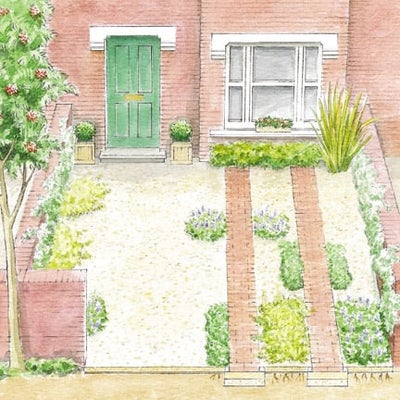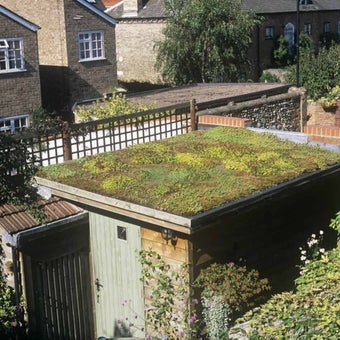
Quick facts
By ensuring front gardens contain a balance of hard landscaping and plants, we can:
Prevent flooding by soaking up summer storm rains
Provide homes to up to 260 species of wildlife (insects, birds etc)
Absorb pollutants, helping us breath easily
Keep us cool in summer and help insulate homes in winter
Make us feel good to come home – it’s scientifically called ‘restoration’
Introduction
Do driveways cause flooding? Heavy rain events have shown that paving over gardens is a major factor in causing severe flooding. In 2007 alone, the associated damage was £3billion in the UK. Laws are now in place that require most non-permeable, traditional driveways to have planning permission - whether new or replacement. So here is our guide on how to reduce paving and increase planting.
If you need to park outside your house, the most logical solution is to pave over the garden. This is certainly a practical option, but with a bit of imagination you can combine paving with an attractive and welcoming garden. And by using materials that allow rainwater to penetrate the ground below, the hard surfaces you do install will shed less water that could otherwise contribute to flooding.
Begin by taking a close look at your front garden.
- Howmany cars do you really need to park and how much space do they take up?
- Have you got walls and fences that climbers could scramble up?
- Are there dead spaces that could accommodate plants, such as the corners?
With the answers to these questions, you can create a design that minimises paving and maximises planting and permeable surfaces. To show how this works in practice, look at the following three examples. The ideas can be used in just about any front garden.

Further ideas
We've put together the snaps of our favourite front gardens: design inspiration on our additional webpage. And check out our front gardens: planting for what to grow.
Getting design and construction help
Designing your own garden can be fun and a creative outlet. However, if you would prefer to use a professional designer to plan your front garden, contact the Society of Garden Designers.
Suitable plants for under cars
If the car is moved fairly regularly, then there are plants you can grow that will tolerate being parked over. These need to be low-growing so the car does not brush them, and tough enough to withstand the occasional running over. Try creeping jenny (Lysimachia nummularia), bugle (Ajuga reptans) and thymes such as Thymus serpyllum. Just leave planting pockets in the paving or gravel to ensure there is soil for them to grow in, rather than hardcore or a bed of concrete.
For more ideas, see pp10-11 of the RHS Front Gardens booklet.
Choosing a car
As well as choosing a car for all the traditional reasons, make sure it fits on your driveway. An unnecessarily large car in a small garden will stick out on to the pavement, looking ungainly and presenting a hazard to pedestrians. Where possible, consider a smaller car in a sympathetic shade. Make sure you can safely manoeuvre it into the front garden, install mirrors in blind spots and cut sloping corners on boundary hedges.








